Artificial Intelligence vs Neural Networks: Understanding the Difference
With the extensive reach of technology in modern life, one comes across ‘Artificial Intelligence (AI)’ and ‘Neural Networks’ as two are used synonymously. In this piece, we differentiate between AI and Neural Networks by discussing their definitions, use cases, and how they are interrelated. This guide is crafted to address popular misconceptions regarding these technologies and is optimized for better clarity and search engine visibility.
What is Artificial Intelligence?
Definition of AI
Artificial Intelligence or AI, is a sub-field of computer science that deals with the development of computer systems that perform tasks that typically require human cognitive abilities. Such tasks include, learning, reasoning, language comprehension, and pattern recognition. AI can function autonomously and aids humans in multiple activities such as medicine, healthcare, and even entertainment.
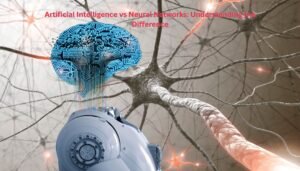
History of AI
Even though the history of AI dates all the way back to the ancient Greek myths, it became popular in 1956 at a workshop at Dartmouth College, where the term was first used (AI History). Through the years, AI has gone through various cycles of optimism accompanied with ‘AI winters.’ The dormant phases tend to follow when technology is unable to meet expectations. The current growth period is supported by the high availability of computing resources, data, and algorithms like machine learning.
Types of AI
AI is categorized into two types: Narrow AI which focuses on specific functions such as speech recognition, and General AI that seeks to emulate human intelligence across different activities. Applications available today, like virtual assistants, are examples of Narrow AI, with General AI remaining a prospective target.
What are Neural Networks?
Definition of Neural Networks
Neural Networks, a specific example of AI, takes as its model the structure of the human brain. They are composed of layers of connected nodes or ‘neurons’ that receive and process information. Each link has a value called weight, which is modified during the training process to enable greater accuracy (Neural Networks).
How Neural Networks Work
Neural networks acquire knowledge by training on vast datasets; they adjust weights through a method called backpropagation to reduce errors. After the training phase, they can accurately predict or classify new information data. This characteristic renders them powerful when performing complicated tasks such as image recognition (Neural Networks Explained).
Types of Neural Networks
Different neural networks suit specific tasks:
- Feedforward Neural Networks: Accept input data and pass it on to subsequent nodes only once in a single pass.
- Recurrent Neural Networks (RNNs): Process data occurring in sequence, for example language.
- Convolutional Neural Networks (CNNs): Are specialized in working with images and performing image processing tasks.
Primary Distinctions of AI Versus Neural Networks
Scope of AI Versus Neural Networks
The term AI covers an extensive domain which incorporates a subfield focused on rule-based systems and decision trees. The neural networks derive from the core concept of AI, being an AI technology competent only in data-based pattern recognition.
Methods of AI Versus Neural Networks
Symbolic as well as statistical methods including machine learning, and even neural networks fall under the umbrella of AI. Neural networks are considered to be statistical due to their lack of adherence to strict criteria as rules, which makes them opaque, but extremely useful in solving problems, especially complex ones (Deep Learning Compared to Neural Networks).
Differences in Application
AI operates on multiple applications ranging from decision tree based expert systems to rule-based systems. From image and speech recognition tasks, neural networks have emerged as the leaders. On one hand, they are exceptional at managing large complex datasets. On the other hand, neural networks need massive computational resources.
AI and Neural Networks Uses
AI Uses
AI has innovatively transformed fields such as:
- Healthcare: An AI can diagnose diseases by analyzing medical images.
- Autonomous Vehicles: Cars are capable of driving themselves using AI.
- Virtual Assistants: Conversational agents such as Siri and Alexa are powered by AI using voice recognition.
- Recommendation Systems: AI-powered systems on Netflix and Amazon can recommend shows and products.
Neural Network Uses
Neural networks are now a days used in:
- Natural Language Processing: Translation and chatbots are powered by RNNs and transformers.
- Image Recognition: CNNs are used in facial recognition and medical imaging applications.
- Forecasting Financial Trends: This is utilized in finance and weather predictions (Applications of Neural Networks).
Visual Recommendation: Attach an infographic showing the difference between the applications of AI and the applications of neural networks. The image description is, “Infographic showing the difference between the uses of artificial intelligence and the uses of neural networks.”
The Connection Between AI and Neural Networks
Neural Networks in AI
Neural networks form an immensely useful part of AI technologies, enabling computer programs to learn through data in a manner resembling the human brain. Yet, other forms also exist, such as through evolutionary algorithms, which does broaden the scope of AI beyond just neural networks.
Neural Network Innovations
Most breakthroughs in AI, including automation of computer vision, speech and language recognition, are now powered with deep learning built on top of multi-layered neural networks. This makes the application of AI increasingly effective, easy, and beneficial (AI Advancements).
Latest Developments and Future Outlook
Improving Transparency in AI Systems
Many argue AI’s neural network aspects function as “black boxes,” rendering the decision-making process intricate and challenging to interpret. The need for greater transparency, particularly in protecting trust in health care and financial system applications, is catered for through Explainable AI.
Artificial Intelligence in the Cloud
Autonomous automobiles form one category of vehicles that greatly benefit from Edge AI, which processes data closer to the source for better speed. This trend is a major advancement for efficiency and real time capabilities.
Tomorrow’s Perspectives on AI and Neural Networks
The aim directs focusing on ethical, self-sufficient, autonomous AI systems. More work is being done on bias mitigation and efficient transformational architecture neural networks for broader integration of AI (Neural Networks Future).
Final Comments
Neural networks and artificial intelligence have a symbiotic relationship. AI, the umbrella term, encompasses the field of technology, whereas is functioning neural network is one of its latest advancements. Identifying the dualism of each of components poses a great impact on industry transformations. The two are bound to prevail shaping the world in the light of advancing technology.
Key Citations:
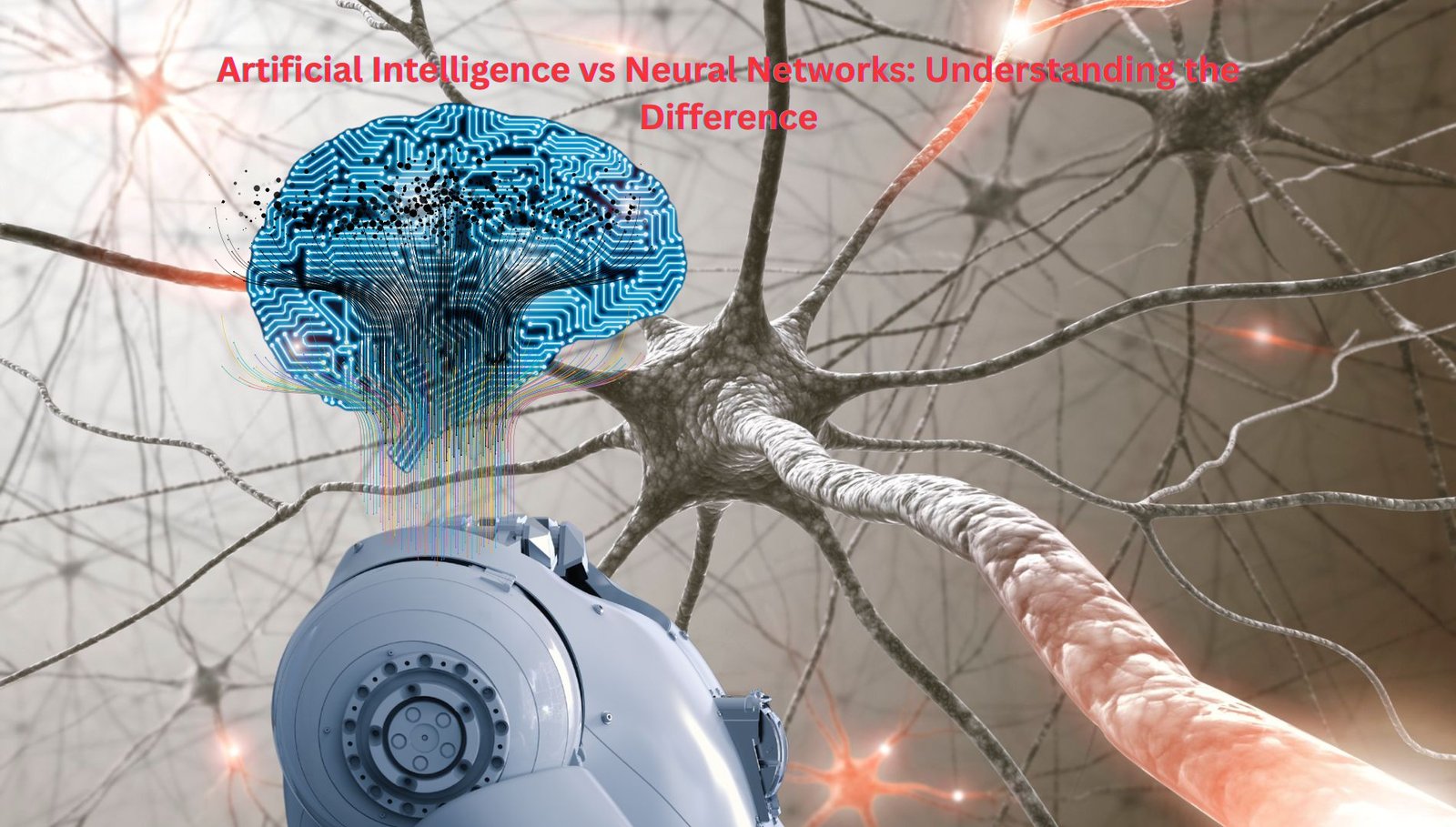

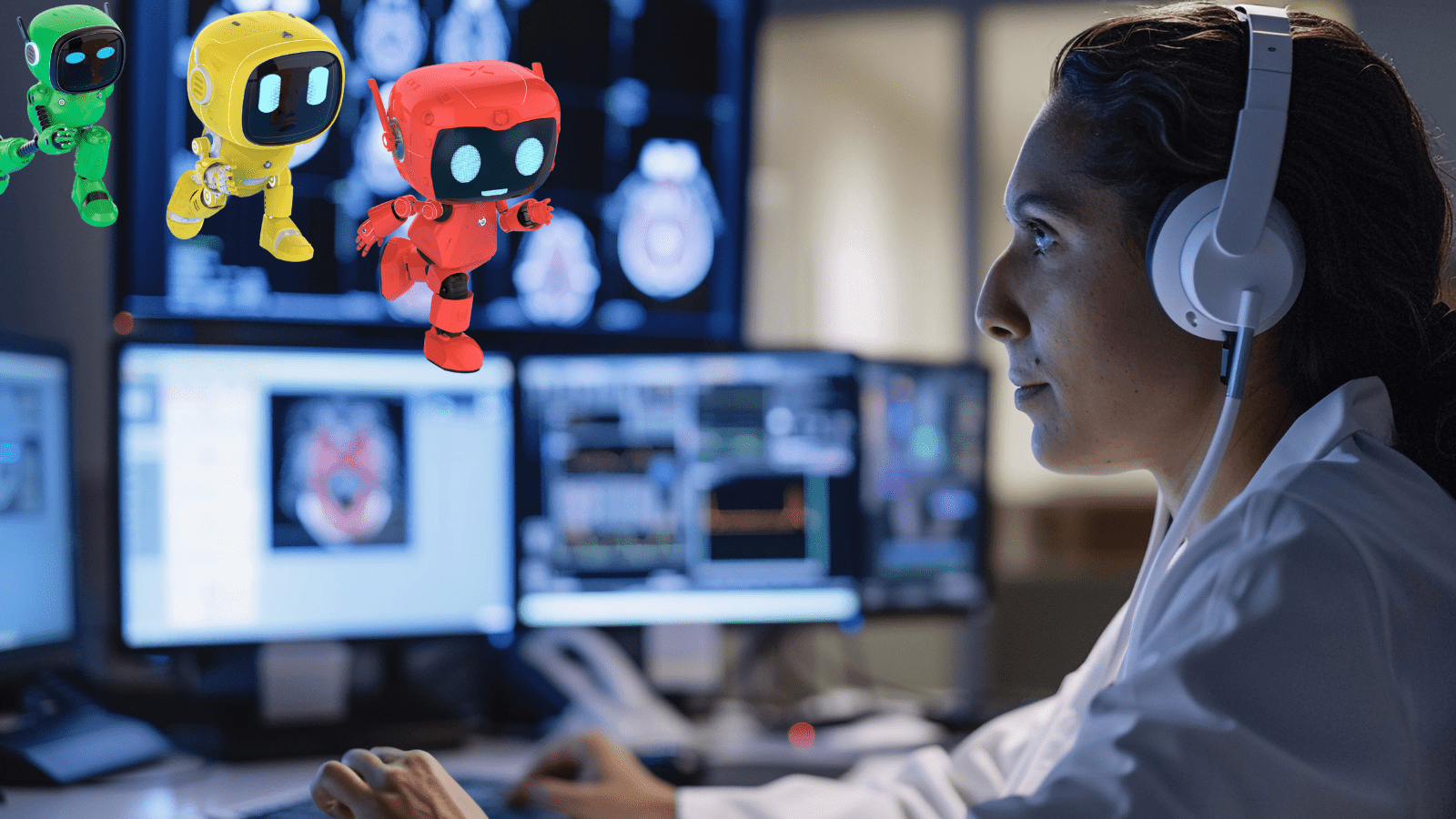










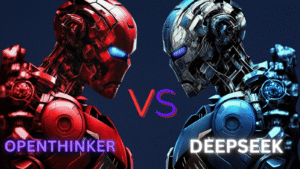


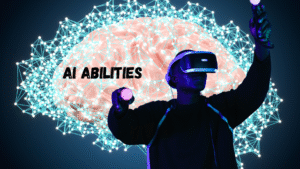


Post Comment